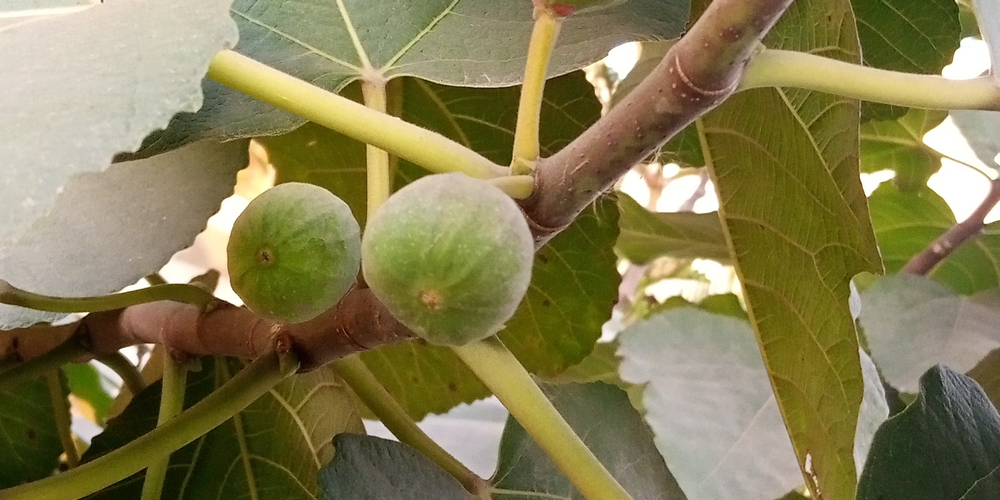Most figs grow like bushes. And the desert king fig tree is a very drought-tolerant tree or shrub that tends to take up a lot of space. If you look closely at its branches’ tips, you will see little tiny figs on each branch end. This cultivar takes advantage of two growing seasons because it is a San Pedro type.
The King fig is the perfect fig tree variety for the Pacific Northwest climate.
- Botanical Name: Ficus carica
- Common Names: Desert king, King
- Plant Type: Deciduous tree
- Fruit Color: Greenish purple with strawberry red flesh
- Size When Mature: 20 feet (height), 40 feet (width)
- Bloom Time: Spring
- Sun Requirements: Full sun or partial shade
- USDA Hardiness Zones: 7b-10b
- Soil PH Range: 5-8
- Soil Type: Humus-rich, well-draining
- Water Needs: Low
- Native Area: California
What you Need to Know About The Desert King Fig Tree
The best time to prune this tree is during summertime. In the North West, June is the optimal month for encouraging as many side branches as possible. You will not let this tree get too tall and pick the fruits without a ladder the following summer.
Picking the fruits from a desert king fig tree at the right time is crucial. You should touch the figs and only pluck them if they feel soft. Even if they might be a little discolored or start to split a little bit. These are all signs of sweet ripe figs.
You should see no white latex sap oozing out of the plucked end during harvest. When white sap oozes out from the peduncle, it is too early. The fig is still unripe and will not taste good.
How to Care for The King Fig
Here is everything you need to know about growing and caring for a thriving desert king fig tree.
Light
The desert king fig tree grows best under full sun. If you grow it in a container, you can move the plant to partial shade to limit its growth. But doing so may discourage the fruiting.
Water and Soil Needs
As long as an inch of rain falls before summer, an old Ficus Carica desert king trees will be fine. New cuttings may need more regular watering to promote the new root system.
But fig trees develop shallow roots that absorb moisture from the topsoil. So, wait at least ten days between waterings to prevent the soil from becoming waterlogged.
The King fig needs fertile, well-draining soil. If you grow one in a container, you should aerate the soil every couple of years by creating a channel for water to penetrate deeper into the center. Over time, the root ball can get dense and hard to water correctly.
The ideal soil mix for growing a desert king fig tree has one-third part soilless potting mix, one-third part organic matter like compost or peat moss, and one-third part perlite.
Temperature Requirements
This cultivar grows well in USDA zones 7b to 10b. It is frost-hardy but will require extra protection if the temperatures drop below 23F.
Fertilizer
The best time to fertilize your desert king fig tree is about 60 days after it breaks dormancy. Or when you see the first fig bud forming between the leaf node and the central stem. In other words, when the fig tree transitions from the growth phase to the fruiting stage.
You can use slow-release, granular organic fertilizer (ideally a 5-5-5 or a 3-4-2) or bone meal to provide phosphorus to make your plant fruit more.
In detail, the first option requires the native soil bacteria, fungi, and worms to turn the fertilizer into viable nutrients. So, it takes more time and might not apply to your fig trees grown in containers.
Common Diseases And Pests
The desert king fig tree usually attracts spider mites and nematodes. But unless it does not frequently rain in summer, there should not be fungal concerns.
Fungal disease signs include internal fruit rot and crop loss.
Desert King Fig Tree Propagation
A simple way to propagate a mature old fig tree is layering. For clarity, you just need to bend one of its new branches until it touches the ground. If you scratch the bark lightly and use a pin to keep it down in a small pit, the branch will shoot out new roots after you bury it.
You can also take a cutting during the winter. In this case, cut a branch right below a node—because that is where new roots will come out. You can either propagate it in water the cutting or make a soil medium with coarse sand and peat moss to retain moisture—coco coir works well too.
How to Prune The King Fig
- Prune vigorous shoots without fruits in June to prevent your desert king fig tree from getting taller and promote later growth.
- Cut the center growth for more sun penetration and airflow in January.
- Cut infested branches as soon as you spot them. Usually, pest infestation happens in early spring after cold damage cracks the old wood. Moths and other insects may lay their eggs in the weakest parts. And once they hatch, the larvae will bore themselves into the tree and eat it from the inside out. Inspect the damaged branches for insect boreholes. Above all, burn the infested wood.
Related Article: Is My Fig Tree Dead?

